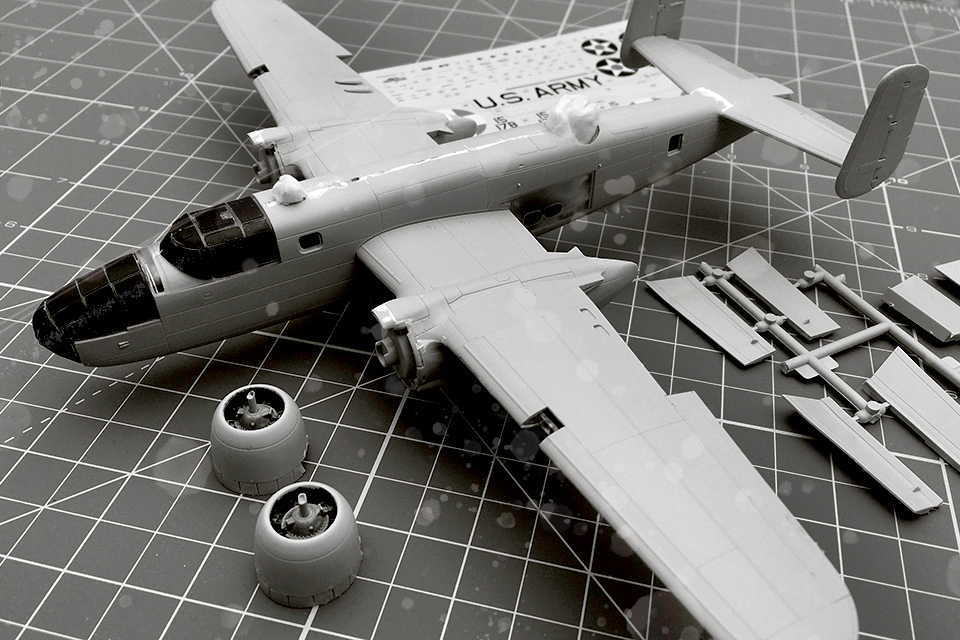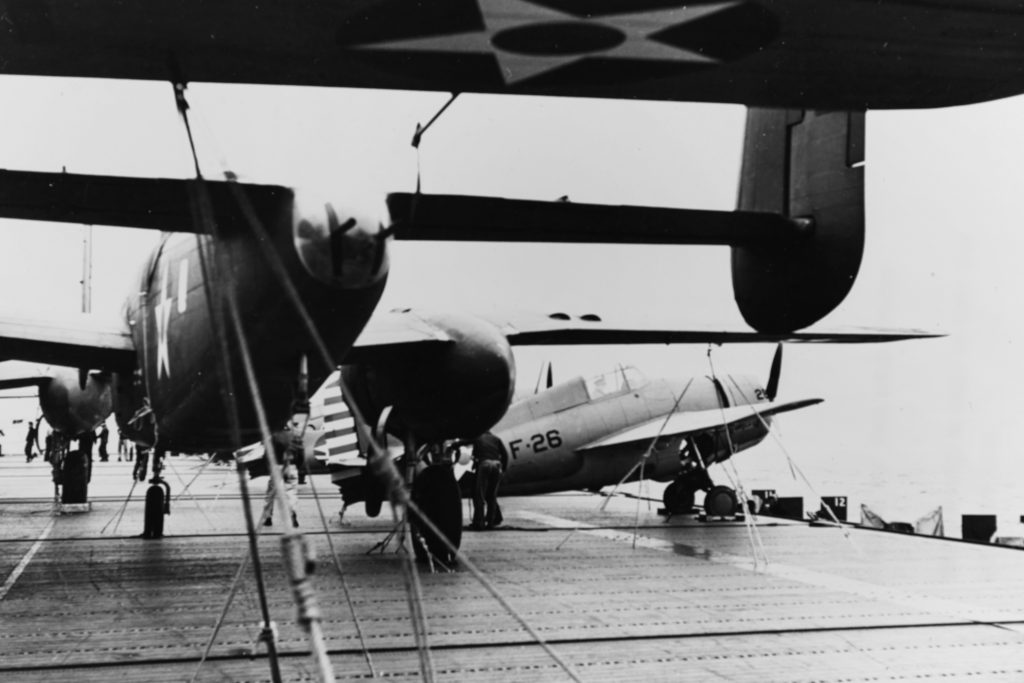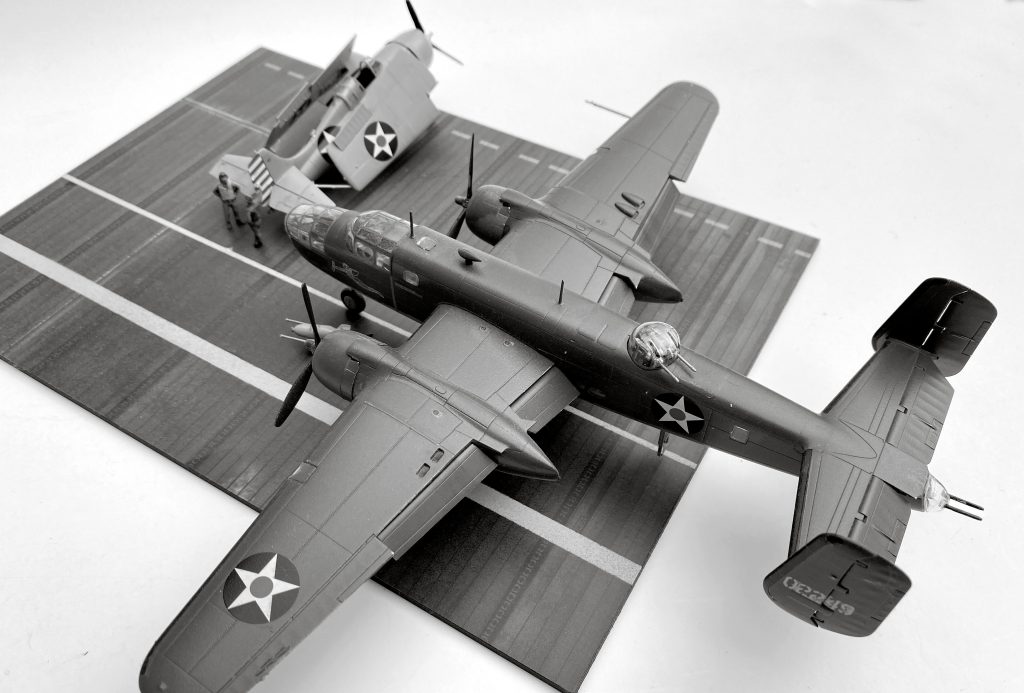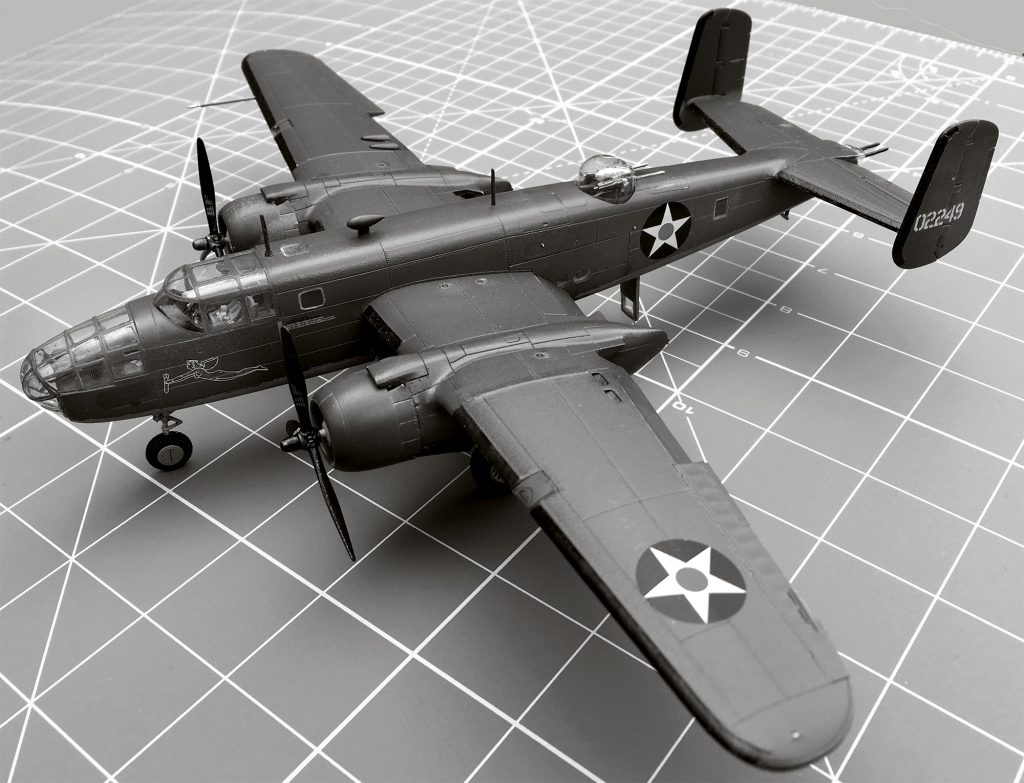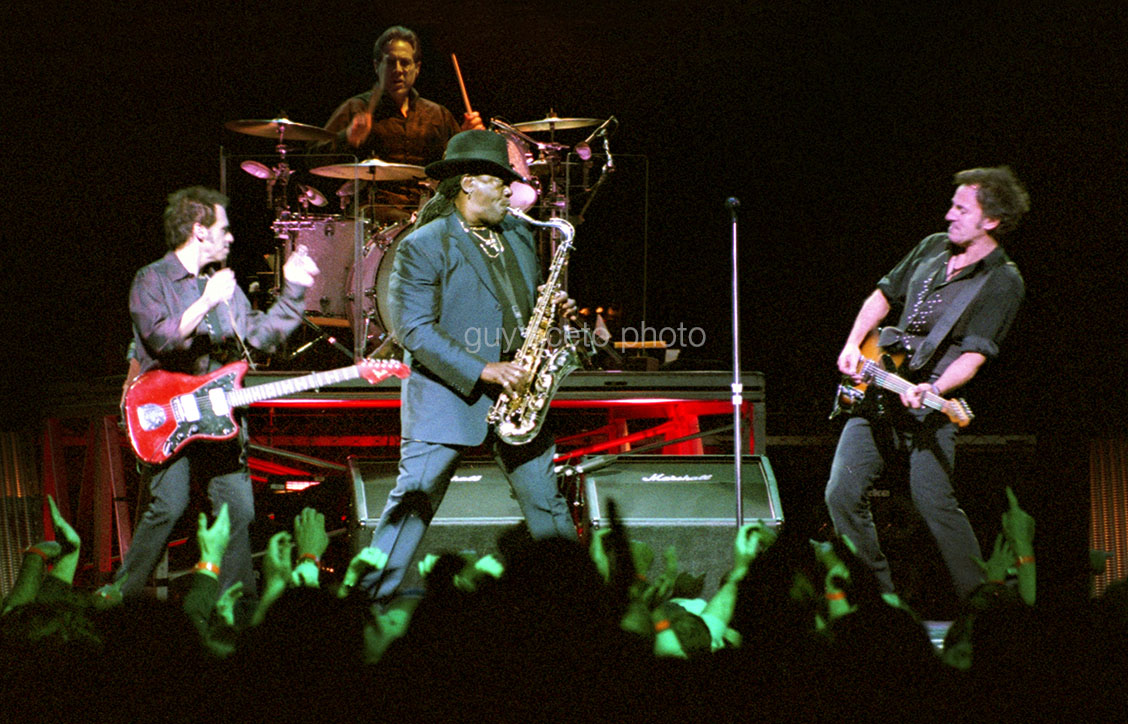This Avenger wasn’t looking for the fictitious Thanos, the Grumman TBF/M Avenger torpedo bomber had a more dangerous enemy in mind.
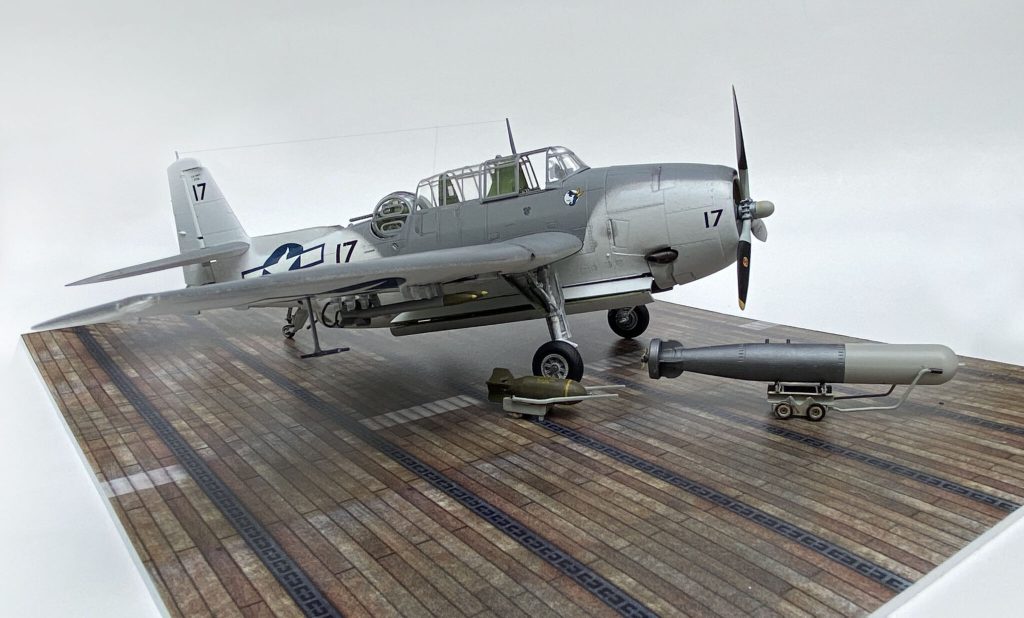
Designed as a replacement for the aging TBD Devastator, the Grumman TBF/M Avenger was arguably the finest torpedo bomber of the war. Best known for its combat record in the Pacific, the Avenger also proved to be a potent weapon in the Atlantic. Operating from small escort carriers, Avengers hunted U-Boats using aerial depth charges, conventional bombs and rockets. Avengers were directly responsible for over thirty submarines and served as the “hunter” part of hunter-killer teams scouring the Atlantic.

These “sub-killing” bombers had a unique look that makes for an interesting addition to the collection.
The Kit
The South Korean based model company, Academy, Re-released the 1996 Accurate Miniatures TBF-1C Avenger in 2013. With a lot of detail and good fit, it was well received by modelers looking for a 1/48th scale replica of the famed torpedo bomber.
This Avenger comes with a choice of weapons, the standard Mk. XIII torpedo, 500lb general purpose bombs and Mk 54 depth charges. Perfect for this U-Boat hunting airplane.
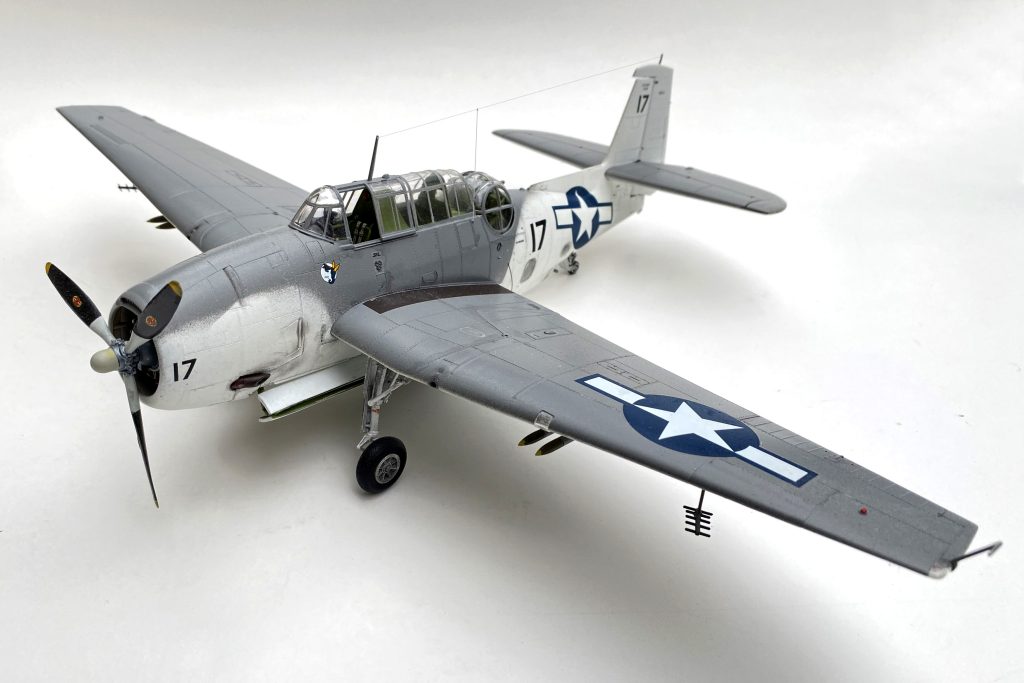
Following the instructions, start with the cockpit painting it an interior Chromate Green (FS 34151). There is plenty of detail from the cockpit through to the bombardier’s station and the rear gunner’s turret. Paint consoles and electronic boxes black, white dials and switches. Add seatbelts and a harness to the pilot’s seat and to the small bench for the bombardier located in the cramped lower part of the airplane, just aft of the bomb bay. The bomb bay itself is part of the entire assembly that runs the length of one of the fuselage sides. Finally, after all that detail, painting and assembly, bring the fuselage halves together and set aside the completed fuselage.
The wing halves, rudder and horizontal stabilizers are a much simpler part of the build. Cement the parts together and set aside.
The unique powered turret
Next, it’s time to build the Avenger’s gun turret. Do your research. This part of the model is not for the novice. The turret, with its .50 caliber machine gun is a complicated little model in itself, comprising ten separate parts. Putting it all together requires extra patience. Take your time and dry fit pieces before final assembly.
Paint most of the pieces interior green. The machine gun should be a steel color with the ammunition chute aluminum. A brown leather armrest on the gunner’s seat, along with a set of seat belts add to the detail that’s already there. After the interior is finished put together the two clear parts of the turret with white glue or a cement designed for clear plastic.
The kit comes with a set of adhesive masks cut to the size of each pane of glass on the Avenger’s large greenhouse of a cockpit canopy. Gently peel off the mask bits and position them in their spots indicated in the instructions. For the turret, carefully stuff the interior of the completed ball shape with a small wad of paper towel and paint the piece the same dark gull gray color (FS 36231) as the upper part of the completed aircraft. Set the pieces of the turret aside to dry thoroughly.
Mask off the cockpit and bomb bay to prepare the model for painting. This Avenger depicts one of the aircraft from VC-55 on the USS Block Island.
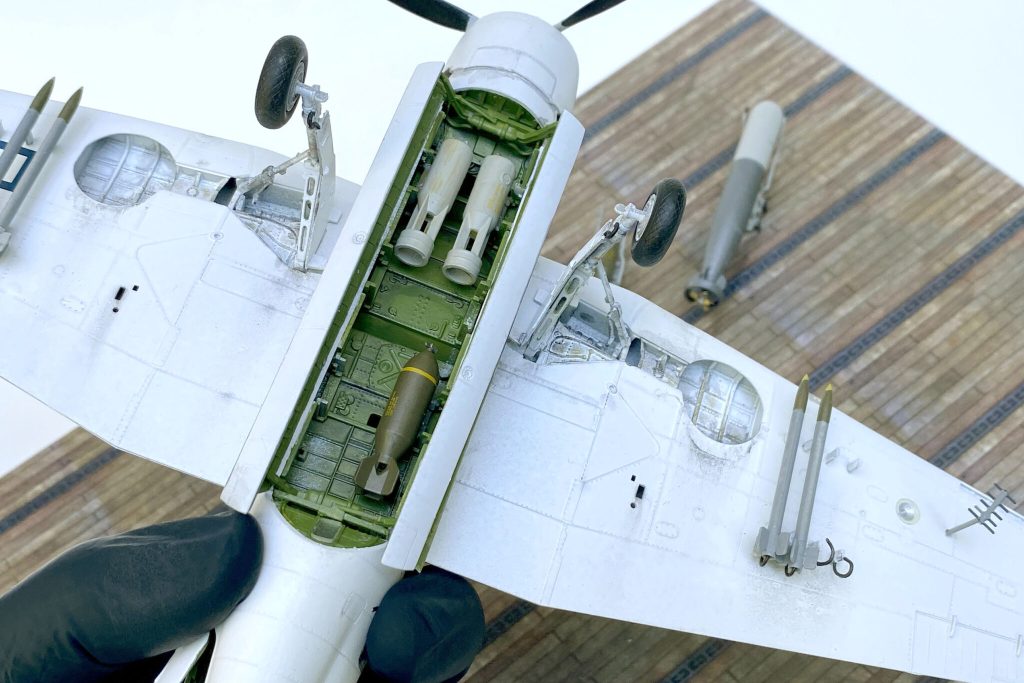
Based aboard small, fast escort carriers, the aircraft were painted Dark Gull Gray on the upper surfaces and white underneath with the white color extending up along the sides of the fuselage. The pattern is a marked difference from the variety of blue schemes seen in the Pacific theater. Mask and paint the fuselage and then attach the wings and horizontal stabilizers, painting along the way. Give the model a coat of clear gloss to get it ready for the decals.
While the aircraft dries, assemble the tires and landing gear. Struts are all painted white including the landing gear bays. Paint the propeller black with a silver hub and white or pale gray “cuffs” at the base of each propeller blade.

Cement the bombs into the bomb bay with the two aerial mines forward and the two general purpose bombs to the rear. The bomb bay doors come as two pieces but will need to be split to pose the doors in an open position. Use a razor saw to cut the doors apart and attach them to the door struts.
Final details
Attach the landing gear and gear doors making sure the airplane sits correctly and give the model a coat of flat varnish to seal the decals.
Carefully, very carefully place the gunner’s turret in its position on the airplane. The fit is extremely tight so take care in adding the completed turret. Next, add the rest of the canopy using a cement designed for clear plastic. Be sure to pose the cockpit open to show off all that detail and hard work. Last, attach the “tiny bits,” the distinct upward canted pitot tube, clear pieces for the red and green formation lights, the delicate surface radar antenna beneath each wing and this TBF-1C Avenger is ready to head out to hunt U-Boats or just start a conversation on the display shelf.



